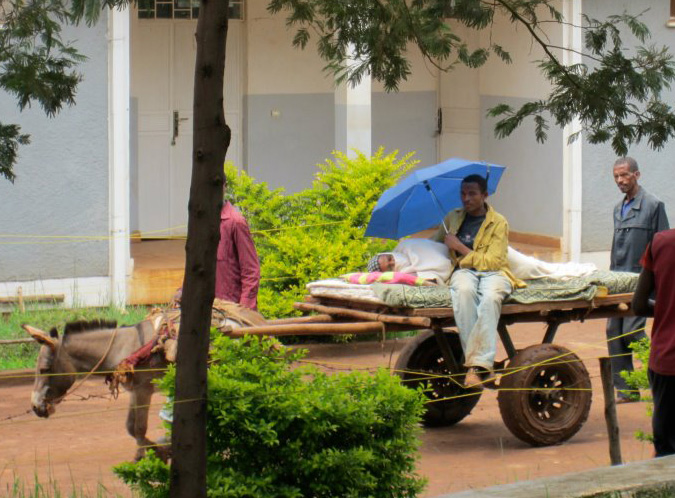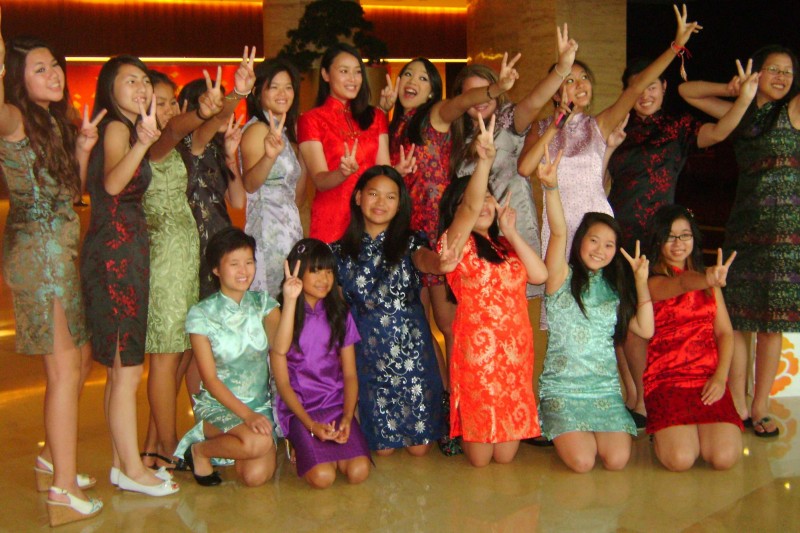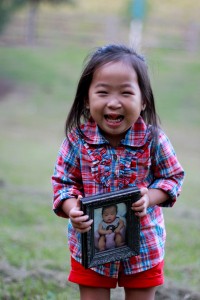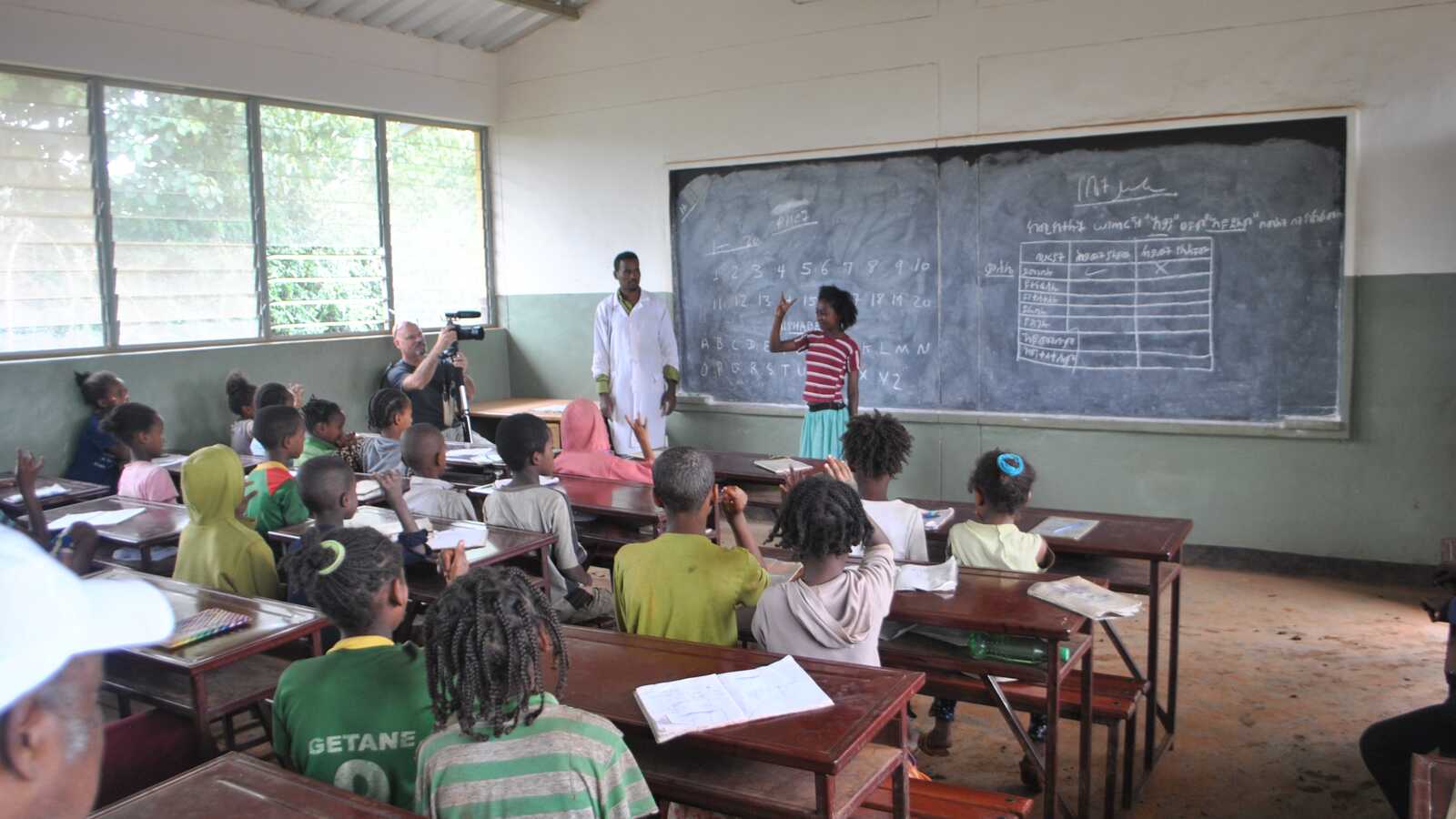In communities throughout rural Ethiopia, Holt works with individual families to improve their health and wellbeing. In one community, Holt is going one major step further. Once complete, the Shinshicho Mother and Child Hospital will provide acute, quality care and emergency treatment for thousands of families and children — a vital service, especially when hours can mean the difference between life and death.
She came wrapped in sheets, lying on the bed of an uncovered, two-wheeled cart pulled by a donkey. At her side sat a family member, holding an umbrella to shield her from the scorching sun. We came in air-conditioned vans – a group of 13 Oregon State University student-athletes, a few Holt staff members and two Holt adoptive fathers. As we arrived, we parked alongside the sick woman’s cart where, collapsed in exhaustion, lay her donkey – its fur and hooves matted with red clay. Very likely, this woman and her donkey traveled miles over rough dirt roads to reach the health clinic here – the only one in a region of 250,000 people.
Three years ago, Holt renovated and expanded this government-run, maternal-child health clinic in Shinshicho – a district capitol and very poor community in southern Ethiopia. Run-down and understaffed, the clinic saw few patients. Instead, most people traveled the 12 miles to the nearest hospital – many on foot. If they didn’t have the resources or were too sick to travel that far, they would often just stay home and wait. Wait to get better. Or wait to die.
Over a week ago, our group landed in Addis Ababa, piled into vans and headed south for Silti – a rural agricultural region where Holt has worked to support struggling families for the past two years. Over six days in Silti, the students built house of mud, straw and eucalyptus for two of the most vulnerable families.
On the seventh day, en route to a big game park in the far south, we stopped to visit Shinshicho. We toured the clinic that Holt helped renovate in 2009. But what we really came to see is the construction project across the road. Here, towering over the clinic and surrounding community, stands the soon-to-be Shinshicho Mother and Child Health Center – the hospital Holt is building for the people of this community.
Strengthening Families, Brick by Brick
When Holt came to Ethiopia in 2007, estimates for the number of homeless children stood somewhere around 5 million. Years of civil war and drought had robbed many Ethiopian people of their livelihoods, while famine and illness had robbed children of their parents. Our staff also recognized that many of the country’s homeless children have living parents or relatives – families who had relinquished them to care centers not for lack of love, but because they had no means to support them. So while pursuing an international adoption program, Holt also began exploring ways to keep children in their birth families. In communities like Shinshicho and Silti, Holt implemented family preservation programs – providing services to help families at risk of separation stay together. Depending on the family’s needs, Holt provided everything from food and clothing to resources that would help generate income. Ultimately, Holt’s Ethiopia staff strived to help these families achieve lasting stability, self-reliance and a greater overall wellbeing.
But critical to a family’s wellbeing, Holt recognized, is access to healthcare.
In rural Ethiopia – where 80 percent of the country’s population resides – only 3 percent of births are attended by a health professional. Among the poorest, it’s just 1 percent. And while the average number of physicians available to every 100,000 people in Ethiopia is about two, in the zonal region that includes Shinshicho, it’s less than one. Recognizing the need, Holt stepped in to increase the community’s access to quality healthcare – starting with the Shinshicho clinic.
“Holt made it beautiful,” says Tesfaye Belachew, who at the time directly oversaw Holt’s family preservation program in Shinshicho. “Holt improved the mother and child delivery rooms and services, hired personnel, a medical doctor and nurses, and cleaners to keep the delivery rooms clean and neat.” As an incentive to keep them in Shinshicho, Holt also supplemented the salaries of the medical staff.
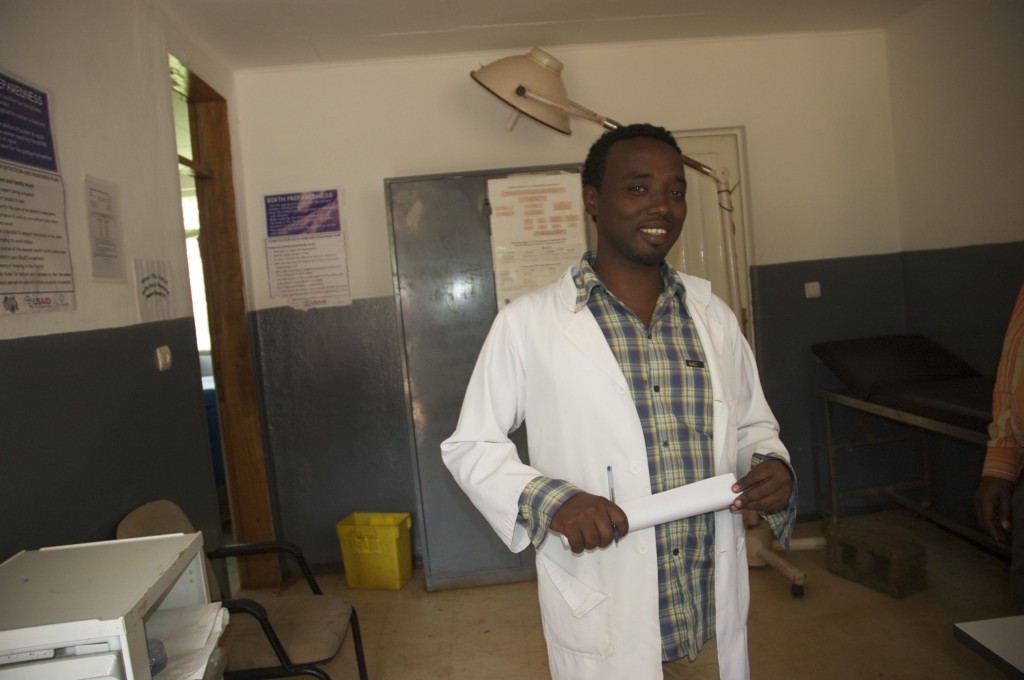
Before Holt intervened, the Shinshicho clinic did not have a single full-time physician on staff. Given the option of a long journey to a poorly equipped, run-down clinic or delivering in the comfort of their own homes, most women in the region preferred to give birth at home, says Tesfaye, who now serves as the in-country program director for all of Holt Ethiopia. Entrenched cultural customs also prevent many women from seeking health care services. But as anywhere, it’s much safer for them to deliver in the presence of a skilled attendant. Every year, 25,000 women in Ethiopia die from pregnancy complications – many because they can’t get to a hospital in time.
If they have a difficult delivery and they have to travel by donkey cart 20 km to the nearest hospital, that could potentially be deadly,” explains Sarah Halfman, Holt’s program director for Africa and Haiti.
“If they have a difficult delivery and they have to travel by donkey cart 20 km to the nearest hospital, that could potentially be deadly.”
Sarah Halfman, Holt Africa & Haiti Program Director
After Holt completed renovations to the clinic in February of 2009, the number of people receiving care more than tripled – from 35 to 150 each day, or about 50,000 people annually. The Shinshicho medical staff treated people for malnutrition and diarrheal diseases, malaria, HIV and leprosy, and respiratory infections such as TB. Holt supported health extension workers to go out into the community and educate families on family planning, disease prevention and other health and sanitation issues. And with refurbished delivery rooms and a medical doctor on staff, more women opted to deliver at the clinic.
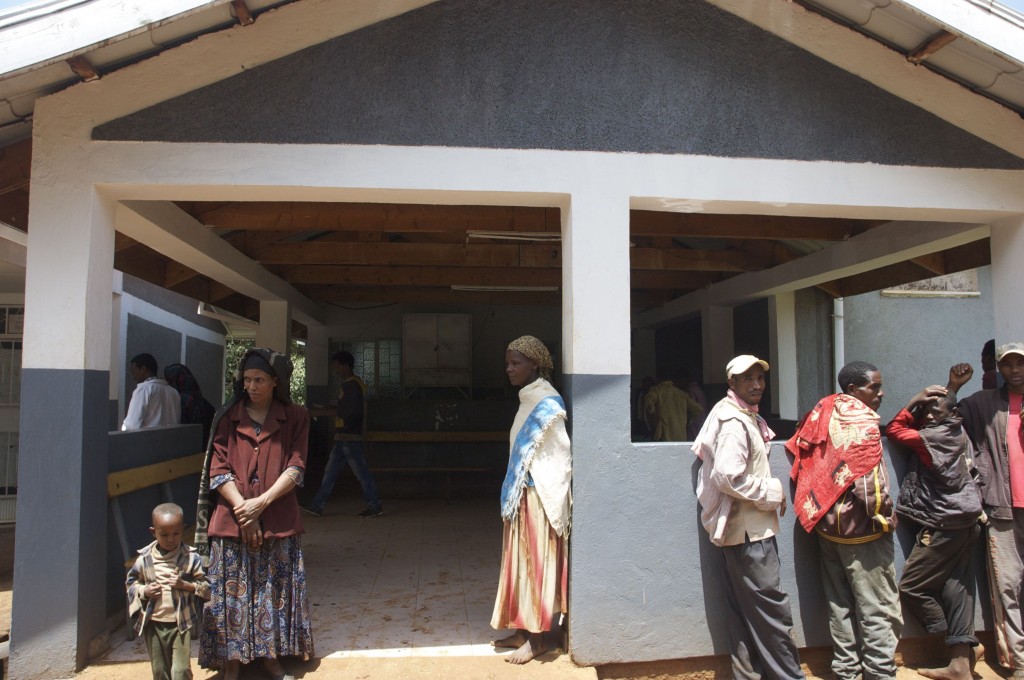
But the clinic was still just a clinic, ill equipped to provide anything beyond basic outpatient care. Anyone requiring surgery, X-rays or hospitalization would still have to travel the 12 miles to the hospital in neighboring Durame, either on foot or by donkey cart. For seriously ill children, pregnant women, or anyone without private means of payment or transportation, this was not really a feasible option.
What this region needed was a hospital. Holt soon recognized that.
In 2010, Holt committed to funding most of the construction costs for a full maternal-child hospital in Shinshicho. The local community responded with an outpouring of donations – often a precious few dollars from individuals whose income is just one to two dollars a day. With backing from the government, and significant involvement from the community – both in funding and labor – Holt completed construction of the foundation and superstructure at the end of 2011.
When we visited in June 2012, the hospital had begun to take shape.
“I’m amazed at the progress,” says Larry Carter, one of Holt’s directors of donor relations, as we walk the unfinished halls of what will be the Shinshicho Mother and Child Health Center. On multiple trips accompanying donors to Shinsicho, Larry has seen the hospital evolve from a pile of rebar to an impressive, three-storied structure that stands out among the many one-story buildings in the surrounding community.
“It’s starting to look like a hospital now,” says Larry.
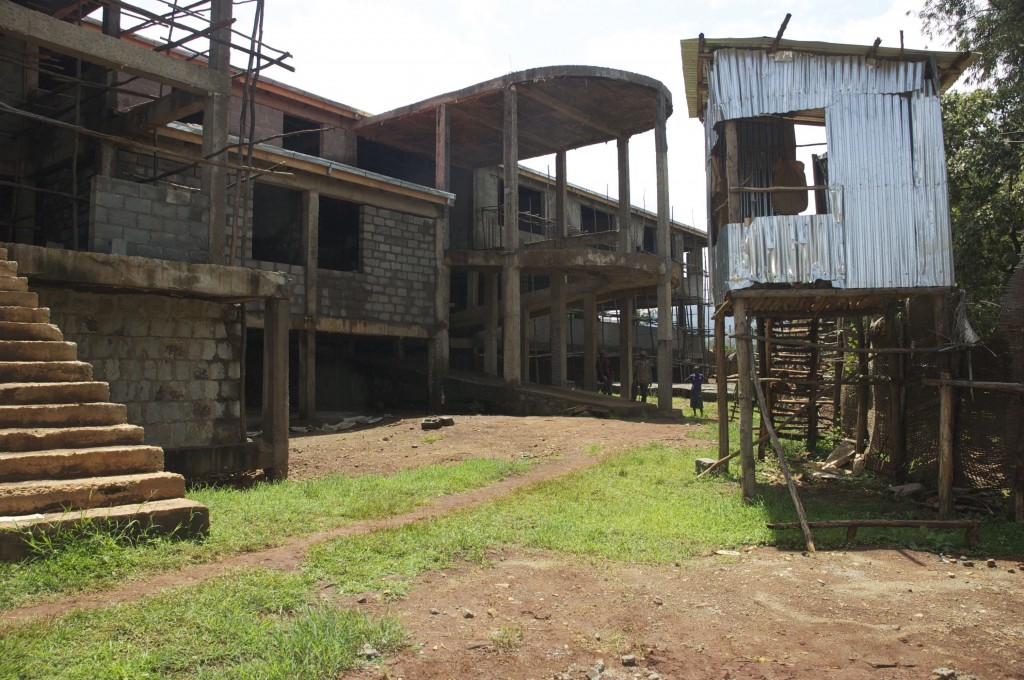
As we arrive at the hospital and see the donkey cart parked beside our van, the 13 students in our group grow suddenly quiet and reverent. They lean on each other as we tour the construction site, listening in earnest as Sarah explains how this hospital will help meet the healthcare needs of this community.
By providing much-needed antenatal care and helping to facilitate deliveries, the renovated clinic helped to improve maternal mortality in the region. Increased access to immunizations for common childhood diseases also increased overall child survival rates. The hospital takes maternal and child healthcare to another level altogether. “The hospital aims to further reduce maternal and child mortality by not only providing preventative care for women and children,” Sarah explains, “but also providing treatment in a facility for handling even the most difficult births.”
As we move on, we pass empty concrete-walled rooms that will serve as in-patient and surgical wings. The windows and doors will go in next year. In the bottom floor, we see a special room where the X-ray equipment will go, and then stand to watch the local workers make cement bricks one by one using a molding machine.
“This is literally being put together brick by brick,” says Sarah.
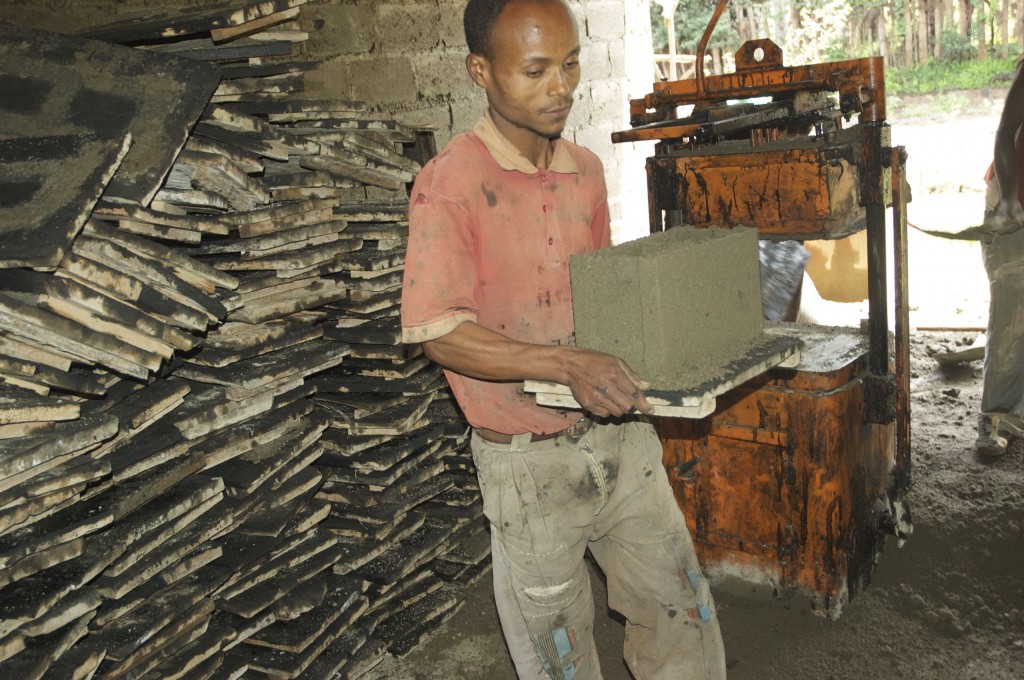
Before we leave, we walk across the road to the clinic. We can hear a woman in labor in the background as we peek into a few of the dozen or so rooms that make up the clinic. Although Holt made significant improvements, the clinic’s resources and capacity to treat patients are still quite limited. We visit a small room where two malaria patients sit on hospital beds crammed up against one another. The “lab” consists of two microscopes, a metal sink and some photocopied images of microbes taped to the wall. One of the students later comments that her middle school science class was better equipped.
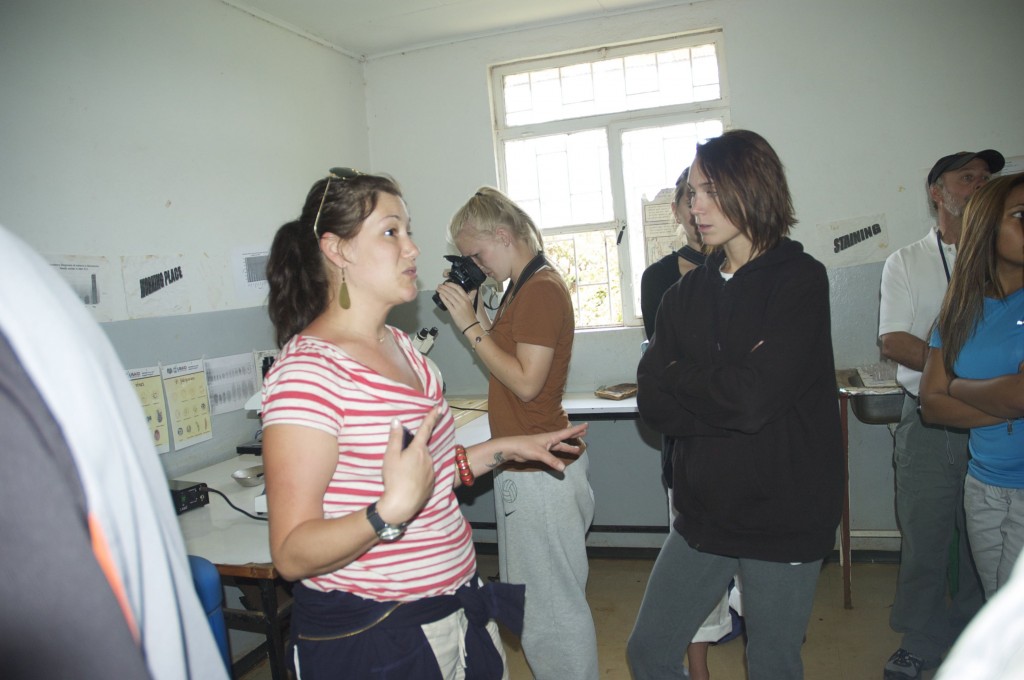
As we drive away, we pass the same woman who came by donkey cart. She is back on the road, wrapped in sheets and huddled under an umbrella. The clinic could not help her. To get the care she needs, she will have to travel to the hospital in Durame. Depending on the severity of her illness, she may not survive the journey. The students are quiet as we continue south. Some of them begin to cry.
A Sharp Contrast
Over the previous six days in the district of Silti, the students saw a side of Ethiopia rarely seen by outsiders. Unexpectedly lush and green, Silti lies in a fertile valley surrounded by breathtaking mountain views in every direction. By American standards, Silti is a very poor community. The residents live in homes made of mud with no electricity or running water, and have very few personal possessions. But their basic needs are met. They have a functional division of labor and property, with ample farmland for growing crops. They have a primary school and a football field and a mosque where the families of this Muslim culture worship. For the families that struggle to meet their own needs, Holt has provided livestock or other resources to generate food and income – helping to elevate them to the standard of the community.
When we arrived, the people of Silti gave us the most overwhelmingly warm welcome, bringing tears to our eyes. They laughed with us, and they cheered the students on as they built homes for two of the most impoverished families in their community. The women were warm and kind and the students marveled at their strength and self-reliance – at women carrying 20-liter bins of water with babies strapped to their backs. The men were proud and jovial, the younger ones practicing their English on the students. The children were playful and giggly, full of energy and life.
To all of us, Silti seemed a community in robust health. Here, the students experienced Ethiopia at its most beautiful and thriving.
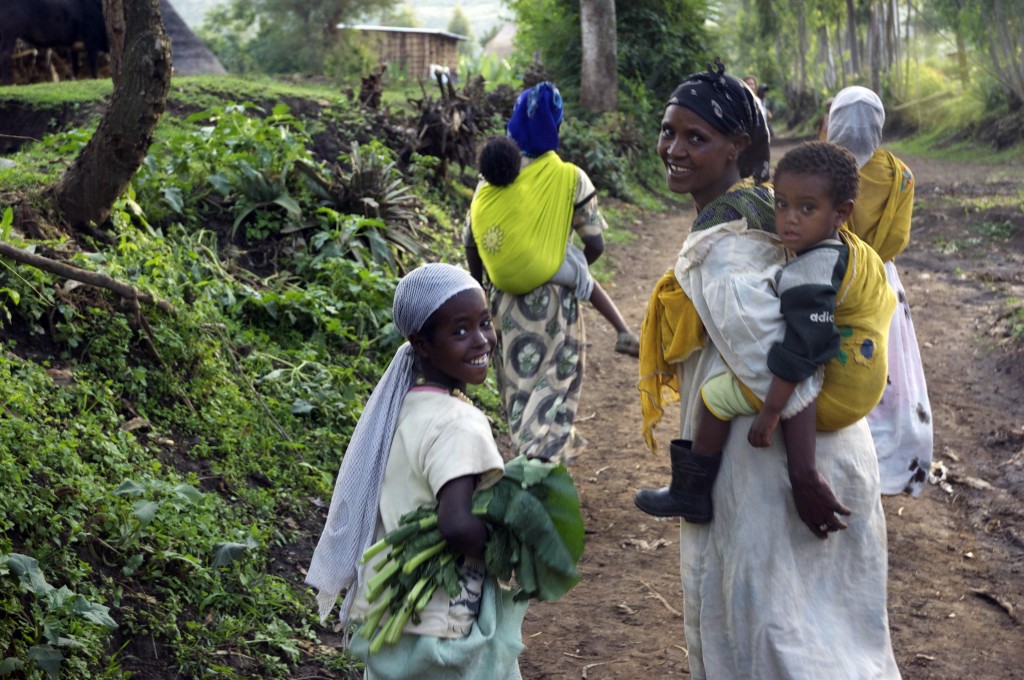
Then we brought them to Shinshicho where, almost immediately, they witnessed the more harsh realities of a country still working to develop a modern infrastructure.
“I didn’t anticipate it, but this was the hardest part of the trip for me and much more challenging than the physical labor of building a house,” Stephanie McGregor, one of the student-athletes, later wrote in a post for the NCAA’s “global perspectives” blog.
Stephanie was surprised to learn from Sarah that not cost but accessibility is often the greatest obstacle for families seeking healthcare in rural Ethiopia. The new hospital Holt is building in Shinshicho will significantly increase access to medical services. Once construction is complete at the end of next year, families in Shinshicho and surrounding areas won’t have to travel quite so far to get the care they need. And when they do arrive – by donkey cart or by foot – they won’t be turned away for inability to provide treatment.
“Where women would be sent away before,” says Sarah, “now they have a place to receive emergency obstetric care — in which hours do mean the difference between life and death.”
“Where women would be sent away before, now they have a place to receive emergency obstetric care — in which hours do mean the difference between life and death.”
Sarah Halfman
Health Begins at Home
Although significant, the hospital is just part of the solution – and one way in which Holt is striving to protect and strengthen the overall health and wellbeing of the families we serve in rural Ethiopia.
In Silti, the students saw a community living peacefully within their modest means. They saw children thriving in the love and care of their parents, and strong, healthy families going about their daily lives. And though they may not have immediately realized it, what they saw in Silti perfectly illustrates how Holt evaluates and responds to each family’s needs – helping them become stronger, healthier and more self-reliant.
Zemzem Rahmeto is the head of one of these families, and one of the two women in Silti for whom the students came to build a new house. When her husband died several years ago, she became the sole provider for her children. Although 45-years-old, she has a youthful glow about her, with a smile so genuine it overtakes her whole face. On a hot and humid afternoon in the village, while the students plastered mud to the walls of her new house, Zemzem sat down to share her story.
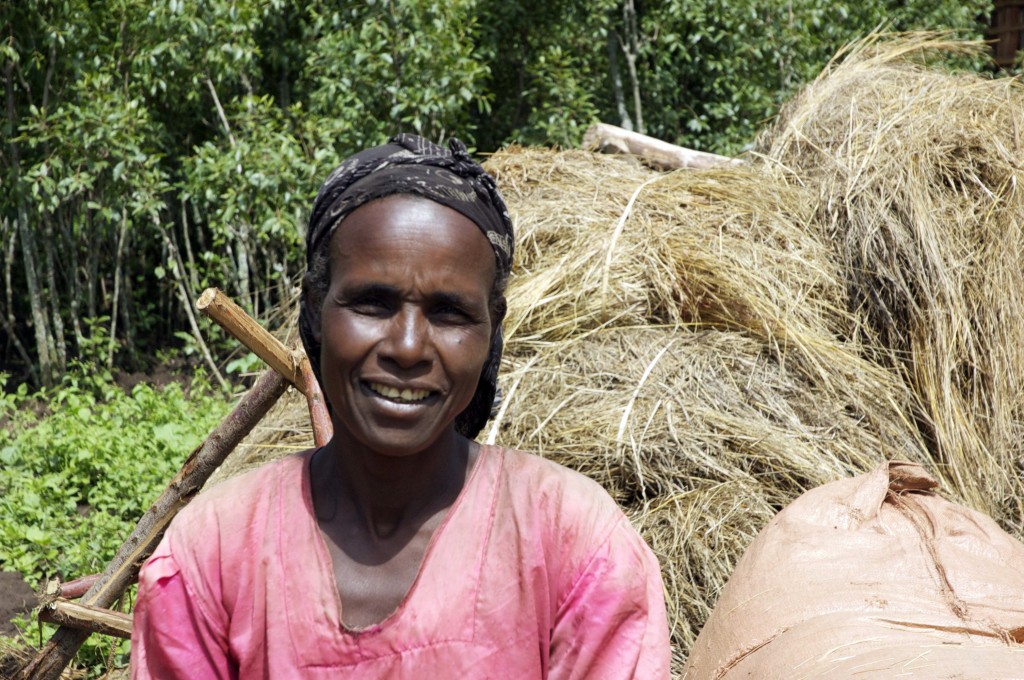
Zemzem had eight children, but two of them died. Two of her children quit school early to find jobs in the city so they could help support the family. One of her daughters is married and lives with her husband in the village. Her three youngest sons, including 19-year-old Jemal, live at home with her in their one-room house. Zemzem only speaks the Silti dialect, so Jemal joins us to translate what she says into Amheric. Holt Ethiopia staff member Miruk Alemu then translates into English.
Zemzem’s husband died a year after her youngest child was born. “He had a persistent cough and they prescribed medications at the health center,” she tells Miruk in a soft, whispery voice. “But we were too poor to buy all the ones they recommended.” Respiratory illnesses are a significant health concern in the Silti community, where people often cook over open-fire stoves inside their windowless, one-room houses. For better ventilation, Holt’s social workers encourage families to cook outside in the open air.
“I tried to raise my kids in the appropriate manner – to protect them from diseases,” Zemzem says.
One great benefit of Zemzem’s new house is that she and her children will no longer have to share their living space with their livestock. “It’s unhygienic for people to live with their animals in the same house,” Jemal explains. He tells us that their old home will serve as a barn for their animals – including a cow Holt provided to give them a source of income. Although they will also cook in their old home, they will create partitions between the animals and the kitchen. Cooking near livestock can cause bacterial diseases, which is another major health issue that local health extension workers and Holt social workers have worked to combat in Silti.
A new house is, as Miruk says, like “a lifetime achievement” for Zemzem. Now, she can relax. “I was so afraid my house would collapse on me,” she says. “But then you intervened and now I am okay. Even though I’m getting weaker as I get older, I will be okay. I’m so grateful.”
“I was so afraid my house would collapse on me. But then you intervened and now I am okay. Even though I’m getting weaker as I get older, I will be okay. I’m so grateful.”
Zemzem, recipient of a new home
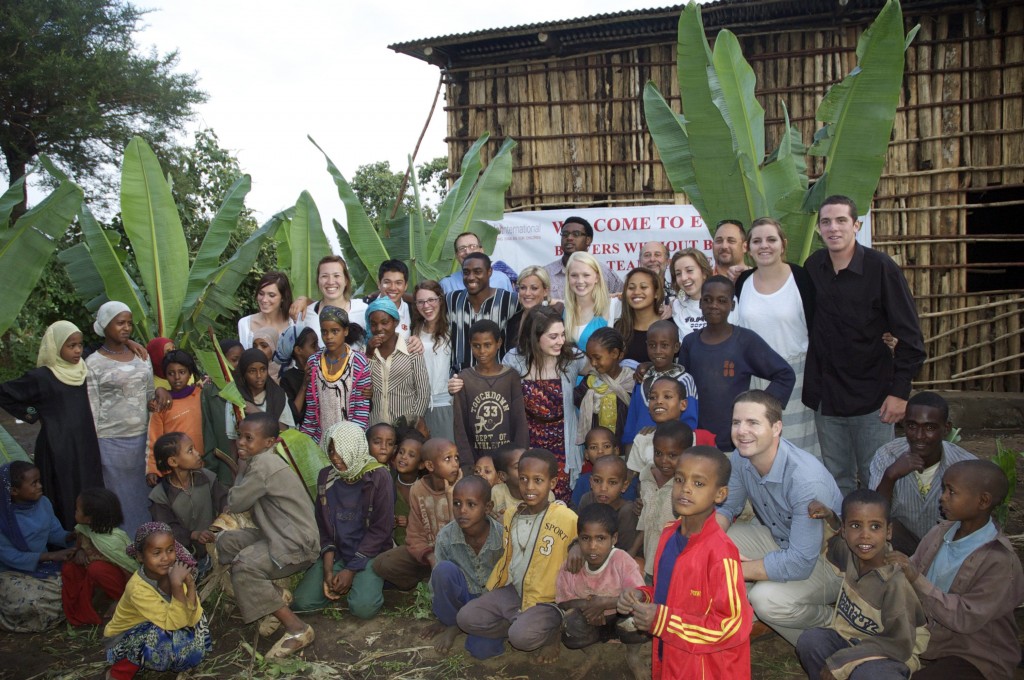
Holt has helped lift up Zemzem and her family, giving her the resources she needs to protect her children from illness and other hardships. The livestock Holt provided makes them less vulnerable to food shortages, especially when in a period of drought. Income from selling milk also gives them extra money when they need it – for school fees or clothing. And if one of Zemzem’s children should fall sick, she will have greater resources to buy the medicine he needs – medicine she couldn’t afford for her late husband.
During our interview, community members frequently walk by and shout their congratulations from the road. As we sit, we also see a group of men carrying a woman on a stretcher. They have come from the mountains surrounding the village, a local tells us. To reach the health center, they will have to walk another 10 km.
These are the circumstances of life in rural Ethiopia. Breathtaking beauty, warmth and joy juxtaposed by heartbreakingly unnecessary suffering and loss. In Silti, Holt social workers are working at the community level to safeguard the health of families. And in Shinshicho, a region struggling with even greater poverty than Silti, Holt is going one major step further. Brick by brick, Holt and the people of Shinshicho are working to ensure that no one is turned away from receiving the critical medical care they need.
“Whether it’s providing a means of income so that parents can afford medicine for their children,” says Sarah, “building houses with walls that separate families from their livestock, supporting health extension workers to educate communities on good hygiene and sanitation, or constructing a full maternal-child hospital – in everything we do – Holt works to mitigate threats to families’ health and livelihoods in Ethiopia.”
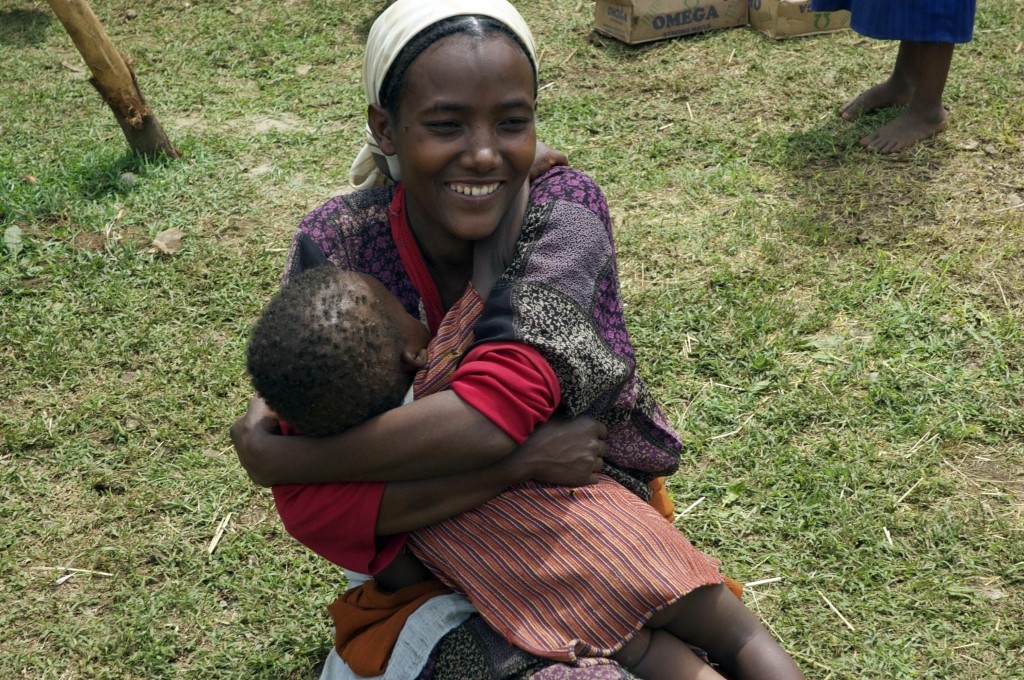
Help us meet our commitment to the people of Shinshicho. We still need to raise approximately $165,000 to complete the structure of the hospital building this year. Click here to learn more.
